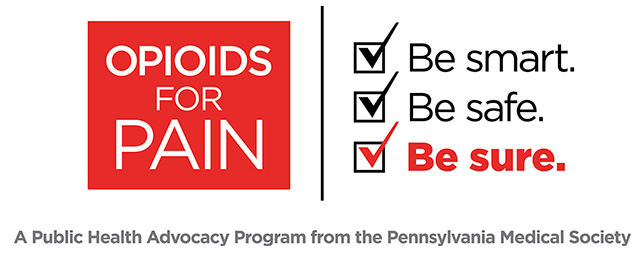Physicians will see a 2 percent reduction in Medicare payments beginning April 1, due to the federal budget sequester
March 7, 2013
AMA/FEDERATION NEWS: National headlines, grassroots news and important AMA announcements for Federation executives and communicators.
TOP STORIES
1. Sequester to cut Medicare physician payment, other health care spending
2. AMA initiative to transform med ed generates huge response from schools
3. AMA, McKesson team up to bring clarity to molecular diagnostic testing
FEDERATION NEWS
4. Insurer’s payment practices contested in Supreme Court case
5. Specialty societies identify 90 overused tests, treatments
PUBLIC HEALTH
6. Uptick in overdose deaths driven by opioids
7. Early alarms sound online when illnesses go viral
ANNOUNCEMENTS
8. Introduce med students to your specialty during 10th annual showcase
9. The JAMA Network goes mobile; free app now available
**************************
TOP STORIES
**************************
1. Sequester to cut Medicare physician payment, other health care spending
Physicians will see a 2 percent reduction in Medicare payments beginning April 1, thanks to the federal budget sequester that took effect Friday.
AMA President Jeremy A. Lazarus, MD, said the sequester cut is a step in the wrong direction.
“[P]hysicians need to make investments in their practices to help design, lead and adopt new models of care delivery that can increase quality and reduce costs now and in the future,” Dr. Lazarus said in a statement. “Further cuts are counterproductive and stifle important progress while placing an unsustainable burden on physician practices.”
In addition to Medicare physician payments, Medicare funding for graduate medical education will be reduced by 2 percent. Other federal health care spending will undergo cuts of about 5 percent. Among the areas hit are research and public health programs of the National Institutes of Health, the Centers for Disease Control and Prevention, and the Substance Abuse and Mental Health Services Administration.
Visit http://www.elabs10.com/ct.html?ufl=b&rtr=on&s=x8pbgr,1ea2h,2ke5,f56,8ged,fz6c,31o6 to read more in AMA Wire.
2. AMA initiative to transform med ed generates huge response from schools
More than 80 percent of America’s accredited medical schools have indicated their desire to work with the AMA to lead bold and innovative changes in the training of future physicians as part of the AMA’s $10 million “Accelerating change in medical education” initiative.
The AMA received proposals from 115 of the 141 accredited medical schools in the United States as part of the initiative, which the AMA announced in January. Proposals came from all categories of medical schools accredited by the Liaison Committee for Medical Education (LCME), including highly ranked research-intensive schools, state-supported and community-based schools, and a number of new medical schools that received LCME accreditation during the last five years.
“The AMA is committed to accelerating change in medical education to better align education outcomes with the changing needs of our health care system,” AMA President Jeremy A. Lazarus, MD, said in a news release. “We look forward to working with medical schools to develop innovative new education models that can be successfully duplicated in institutions across the country.”
The final eight to 10 grant awardees will be announced in June at the Annual Meeting of the AMA House of Delegates.
Visit http://www.elabs10.com/ct.html?ufl=b&rtr=on&s=x8pbgr,1ea2h,2ke5,2d5k,a928,fz6c,31o6 to read more in AMA Wire.
3. AMA, McKesson team up to bring clarity to molecular diagnostic testing
A new initiative announced last week by the AMA and health care services and IT company McKesson will create a consistent and transparent way to identify and track the rapidly increasing number of molecular diagnostic tests across the health care industry.
Under a new licensing relationship, the two organizations will establish a comprehensive reference that maps McKesson’s molecular diagnostic test identifiers against the corresponding molecular pathology codes in the AMA’s Current Procedural Terminology (CPT®) code set. The reference is intended to support innovations in advanced diagnostics.
“The McKesson Diagnostics Exchange provides an infrastructure that will support the AMA’s efforts to advance personalized medicine, promote access to innovative diagnostic capabilities and improve patient outcomes,” AMA CEO and Executive Vice President James L. Madara, MD, said in a news release.
Visit http://www.elabs10.com/ct.html?ufl=b&rtr=on&s=x8pbgr,1ea2h,2ke5,dz73,gsds,fz6c,31o6 to read more in AMA Wire.
**************************
FEDERATION NEWS
**************************
4. Insurer’s payment practices contested in Supreme Court case
A case before the Supreme Court of the United States will determine whether thousands of physicians can bring a class arbitration against a health insurer that has wrongfully underpaid them for more than a decade.
The Litigation Center of the AMA and State Medical Societies and the Medical Society of New Jersey (MSNJ) filed a friend-of-the-court brief last week, shining light on the importance of allowing physicians to file class arbitrations against insurers.
Sutter v. Oxford Health Plans dates back to September 2003 when New Jersey pediatrician John Sutter, MD, alleged that Oxford Health Plans had systematically bundled, downcoded and delayed payments for his services and those of 20,000 other physicians in its network.
While the arbitrator and other legal opinions have deemed the class arbitration acceptable under the terms of the insurer’s managed care contract, Oxford Health Plans has appealed the case all the way to the U.S. Supreme Court. The Litigation Center and MSNJ argue in the brief that without such broad-scale arbitration, physicians would have no means of challenging an insurer’s unfair payment practices.
“[I]t is clear that Oxford would rather pay hundreds of claims individually in arbitration and continue its practices unabated so that it would never have to stop its wrongful–and lucrative–conduct,” the brief states.
Visit http://www.elabs10.com/ct.html?ufl=b&rtr=on&s=x8pbgr,1ea2h,2ke5,l6cr,emgw,fz6c,31o6 to read more in AMA Wire.
5. Specialty societies identify 90 overused tests, treatments
National groups representing 17 medical specialties have joined a campaign to raise awareness about commonly ordered tests and treatments that aren’t always necessary and could cause undue harm.
Using the latest evidence about management and treatment options, the groups each released a list of five tests, procedures and medication therapies in their specialties that they believe should be carefully considered before ordering. The lists are part of an ABIM Foundation campaign, which now includes 25 national medical specialty societies.
“Through these lists of tests and procedures, we hope to encourage conversations between physicians and patients about what care they truly need,” ABIM Foundation President and CEO Christine K. Cassel, MD, said in a news release.
Among the medical specialty societies to issue lists last month are:
* American Academy of Hospice and Palliative Medicine
* American Academy of Neurology
* American Academy of Ophthalmology
* American Academy of Otolaryngology–Head and Neck Surgery
* American Academy of Pediatrics
* American College of Obstetricians and Gynecologists
* American College of Rheumatology
* American Geriatrics Society
* American Society for Clinical Pathology
* American Urological Association
* Society of Nuclear Medicine and Molecular Imaging
* Society of Thoracic Surgeons
Visit http://www.elabs10.com/ct.html?ufl=b&rtr=on&s=x8pbgr,1ea2h,2ke5,iysb,czg5,fz6c,31o6 to read more in an ABIM Foundation news release.
**************************
PUBLIC HEALTH
**************************
6. Uptick in overdose deaths driven by opioids
Drug overdose deaths increased for the 11th consecutive year in 2010, according to a new analysis published in the Journal of the American Medical Association. Leading the list of drugs responsible for these fatalities are prescription medications, especially opioid analgesics.
The analysis, conducted by the Centers for Disease Control and Prevention (CDC), found that 38,329 people died from a drug overdose in 2010–up from 37,004 deaths in 2009 and 16,849 deaths in 1999. Nearly 60 percent of the overdose deaths in 2010 involved pharmaceutical drugs, with opioids associated with roughly 75 percent of these deaths.
Physicians can learn how to safely and effectively prescribe these painkillers by viewing two on-demand webinars, the first in an ongoing series sponsored by the AMA. Each webinar covers topics related to responsible opioid prescribing presented by national experts. The series is part of a larger collaborative project called the Prescribers’ Clinical Support System for Opioid Therapies.
Visit http://www.elabs10.com/ct.html?ufl=b&rtr=on&s=x8pbgr,1ea2h,2ke5,3qwu,h82x,fz6c,31o6 to read more in AMA Wire.
7. Early alarms sound online when illnesses go viral
The promise of social media and other online sources has some health experts saying that physicians can use the Web as an early warning or just-in-time tracking system for outbreaks of the flu and other diseases, according to a recent article in American Medical News.
By monitoring such sites, physicians could get a sense of what to expect in their communities in the near future and better prepare for spikes in disease, American Medical News reports. Preparations could include temporarily increasing staffing, starting flu testing for patients with influenza-like illness and ensuring that there are sufficient supplies on hand, such as face masks and vaccine, and plans in place to manage the influx of patients.
Such online tools as Google Flu, for instance, allow users to customize reported activity by region, state or large city. While the Centers for Disease Control and Prevention has access to people with influenza only when they seek medical care, online flu monitoring can identify illness among anyone in the community, including people who choose to stay home rather than see a doctor, American Medical News reports.
Visit http://www.elabs10.com/ct.html?ufl=b&rtr=on&s=x8pbgr,1ea2h,2ke5,lapg,4zgg,fz6c,31o6 to read the article in American Medical News.
**************************
ANNOUNCEMENTS
**************************
8. Introduce med students to your specialty during 10th annual showcase
Medical associations have an opportunity to showcase their specialty to the next generation of physicians by participating in an AMA event this summer.
Hundreds of medical students from around the country will be participating in the AMA Medical Student Section’s 10th annual Medical Specialty Showcase June 15 during the Annual Meeting of the AMA House of Delegates in Chicago.
The event will allow students to learn more about the specialties they are considering from physicians and medical residents with experience in the field. This is an excellent opportunity for your members to introduce students to your specialty, provide promotional materials to assist with the career decision-making process and encourage these young leaders to become active participants in your organization after graduation.
Visit http://www.elabs10.com/ct.html?ufl=b&rtr=on&s=x8pbgr,1ea2h,2ke5,absz,dd62,fz6c,31o6 to learn more about the event and to reserve free exhibit space for your organization. Registration is open through May 17.
Please note that groups will be approved to participate only if they can guarantee a resident or other physician at their exhibit.
Email Katherine Torres-Hertz of the AMA at [email protected] for additional information.
9. The JAMA Network goes mobile; free app now available
Physicians can connect with the latest medical research using a new Web app from The JAMA Network.
Free for a limited time, the JAMA Network Reader allows physicians to access the content of the Journal of the American Medical Association (JAMA) and The JAMA Network’s nine specialty journals via any digital device.
“By leveraging HTML5 technology, the Web app will provide mobile and desktop readers with a user experience optimized for online and offline mobile reading, whether via desktop, tablet, or smartphone, in the office, on rounds, in the laboratory, on the train or plane, or in any comfortable reading chair,” JAMA editors wrote in the March 6 issue.
Visit http://www.elabs10.com/ct.html?ufl=b&rtr=on&s=x8pbgr,1ea2h,2ke5,ari0,fiwe,fz6c,31o6 to begin using the app.




